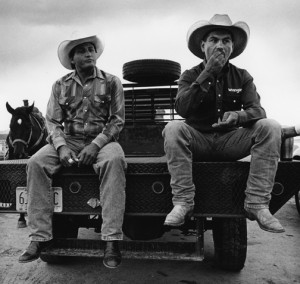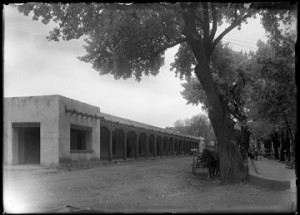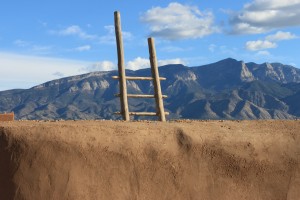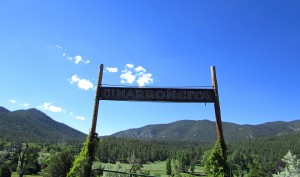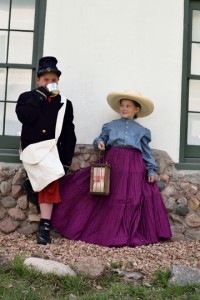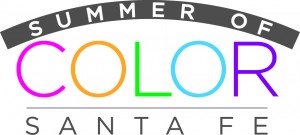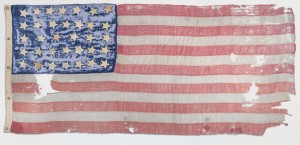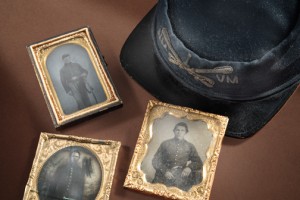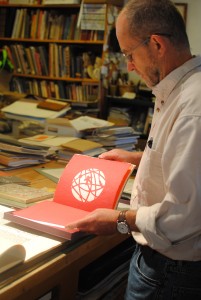 If you’re like most people, walking into the Palace Press causes a bit of bedazzlement. All those old presses, stacks of cases and walls lined with posters, broadsides and fliers. There’s so much eye candy that you might miss one of its best attributes: Its library.
If you’re like most people, walking into the Palace Press causes a bit of bedazzlement. All those old presses, stacks of cases and walls lined with posters, broadsides and fliers. There’s so much eye candy that you might miss one of its best attributes: Its library.
“There were probably around 300 books when I started, and now there must be a thousand,” said Tom Leech, director of the Palace Press. “This collection was inherited from my predecessor, Pam Smith, but has easily doubled in the time I have been here. It’s an extensive collection on graphic arts and the history of the book, including papermaking and typesetting.”
The Palace Press library covers subjects like lettering, papermaking, and typesetting, and features examples of works done in the early days of printing.
“The purpose is to have a research and reference collection. It isn’t a lending library, but if someone wants to come in and peruse, it’s OK,” Leech said. “It seems like lately we’ve gotten donations with real frequency. Recently, 250 small-press pamphlet-type books were donated to us. We get donations simply because people thought the books belonged here. We also try to collect information on what is related to the incoming exhibitions, so we know what we can be producing.”
Leech also has a fascination with the history of printing. “By virtue of our interest in type, we have a book by Dard Hunter Jr., whose father was well-known for his books on papermaking. It has nice, simple explanations of casting type, how he carved and cast it by hand, and it is all printed on paper that was probably even made by his dad.”
Dard Hunter’s interest began in the early 1920s. Since then, there has been a renaissance of creating paper and using it in traditional presses, which feeds into the craft of printing and its significance today. Leech and fellow pressman James Bourland follow that example even today—often after consulting the books on their shelves.
“Simple books are really the most beautiful,” Leech said. “Sometimes the book is about a particular subject, and other times it’s the book itself that is the work of art.”

